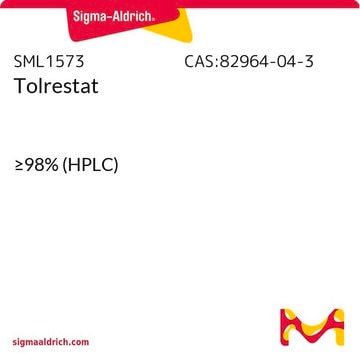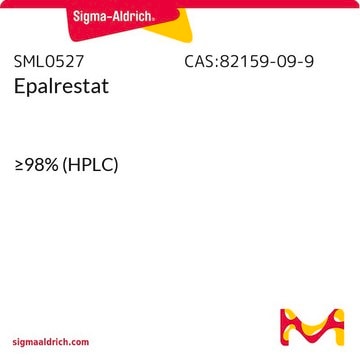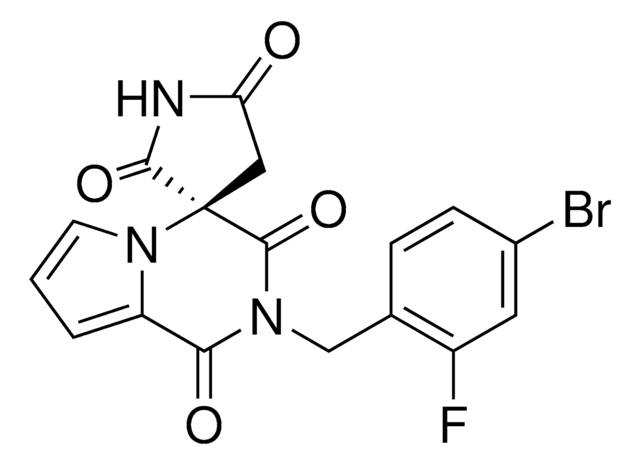S7701
Sorbinil
≥98% (HPLC)
Sinônimo(s):
(+)-(4S)-6-Fluorospiro[chroman-4,4′-imidazolidine]-2′,5′-dione, (4S)-6-Fluoro-2,3-dihydro-spiro[4H-1-benzopyran-4,4′-imidazolidine]-2′,5′-dione, CP 45634
Selecione um tamanho
Selecione um tamanho
About This Item
Produtos recomendados
Nível de qualidade
Ensaio
≥98% (HPLC)
Formulário
powder
atividade óptica
[α]/D +50 to +60°, c = 1 in methanol
cor
white to off-white
solubilidade
DMSO: ≥20 mg/mL
temperatura de armazenamento
2-8°C
cadeia de caracteres SMILES
Fc1ccc2OCC[C@]3(NC(=O)NC3=O)c2c1
InChI
1S/C11H9FN2O3/c12-6-1-2-8-7(5-6)11(3-4-17-8)9(15)13-10(16)14-11/h1-2,5H,3-4H2,(H2,13,14,15,16)/t11-/m0/s1
chave InChI
LXANPKRCLVQAOG-NSHDSACASA-N
Categorias relacionadas
Aplicação
Ações bioquímicas/fisiológicas
Características e benefícios
Exoneração de responsabilidade
Palavra indicadora
Warning
Frases de perigo
Declarações de precaução
Classificações de perigo
Acute Tox. 4 Oral
Código de classe de armazenamento
11 - Combustible Solids
Classe de risco de água (WGK)
WGK 3
Ponto de fulgor (°F)
Not applicable
Ponto de fulgor (°C)
Not applicable
Escolha uma das versões mais recentes:
Certificados de análise (COA)
Não está vendo a versão correta?
Se precisar de uma versão específica, você pode procurar um certificado específico pelo número do lote ou da remessa.
Já possui este produto?
Encontre a documentação dos produtos que você adquiriu recentemente na biblioteca de documentos.
Artigos
DISCOVER Bioactive Small Molecules for Nitric Oxide & Cell Stress Research
Active Filters
Nossa equipe de cientistas tem experiência em todas as áreas de pesquisa, incluindo Life Sciences, ciência de materiais, síntese química, cromatografia, química analítica e muitas outras.
Entre em contato com a assistência técnica







